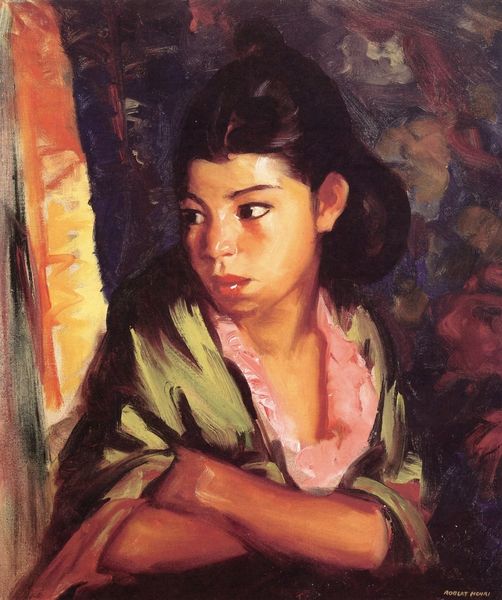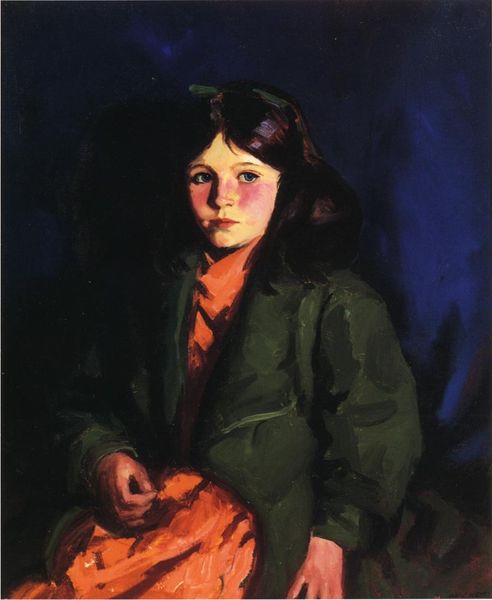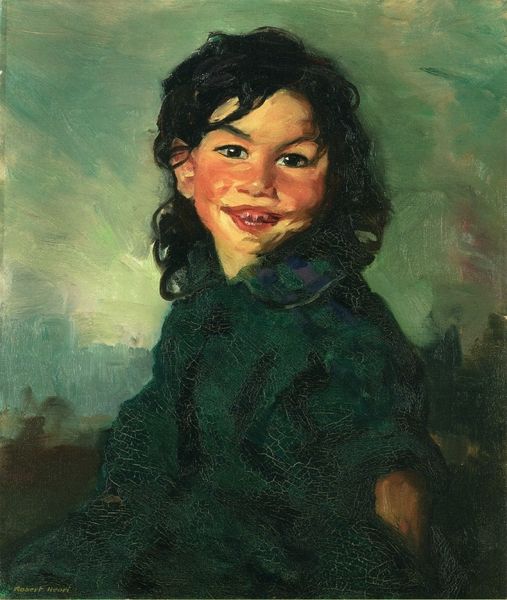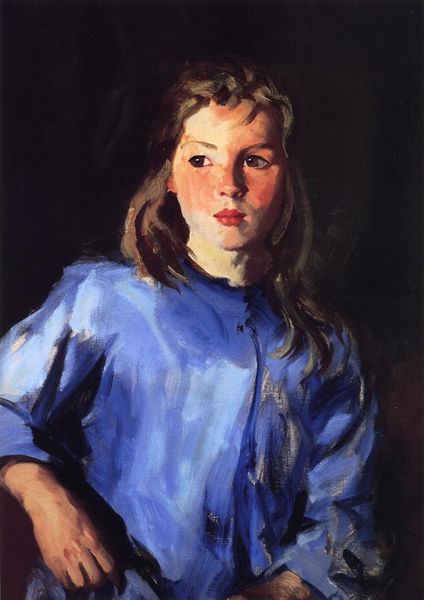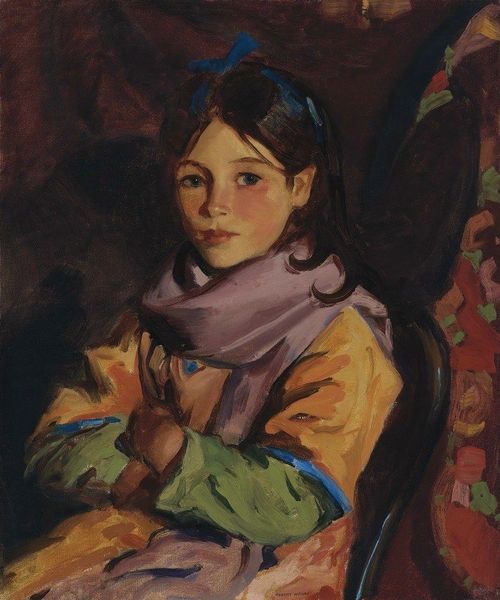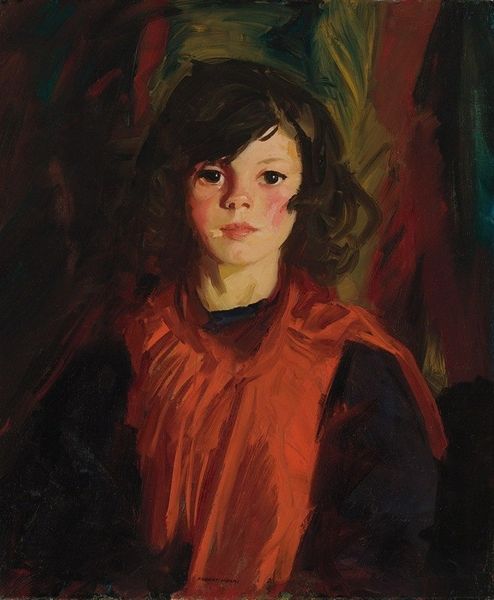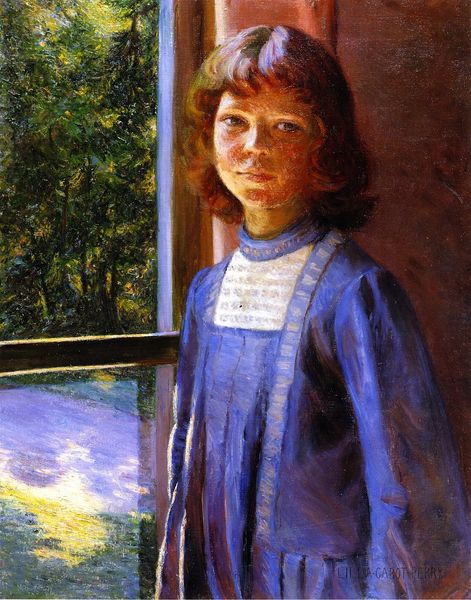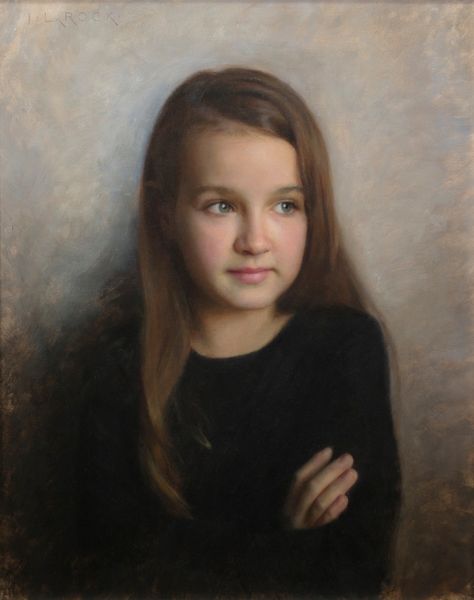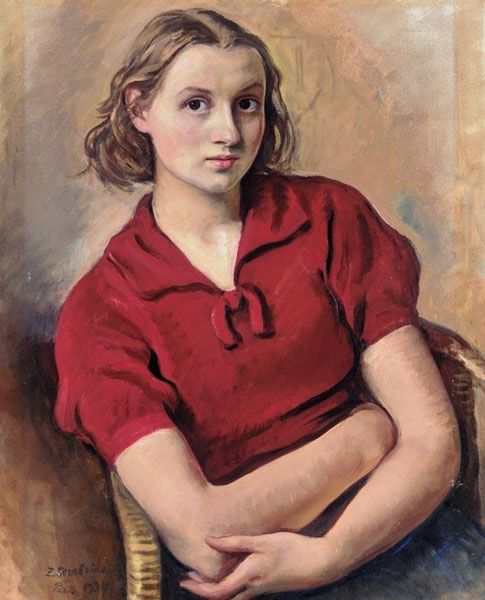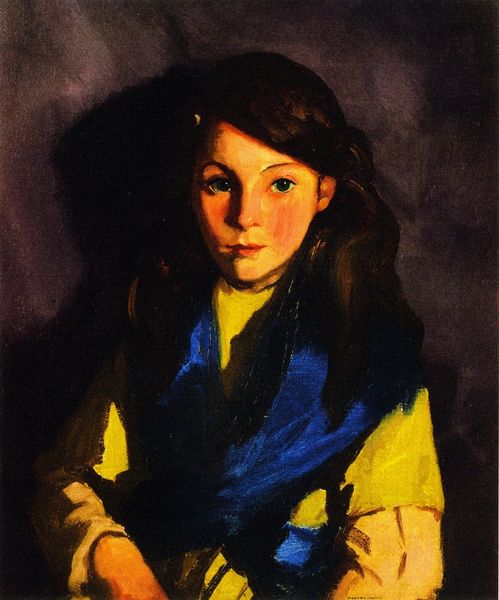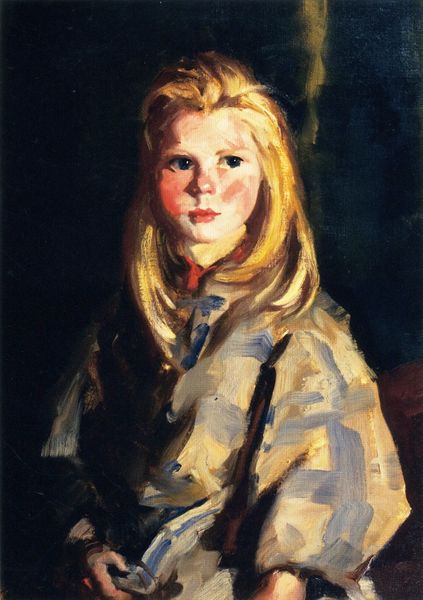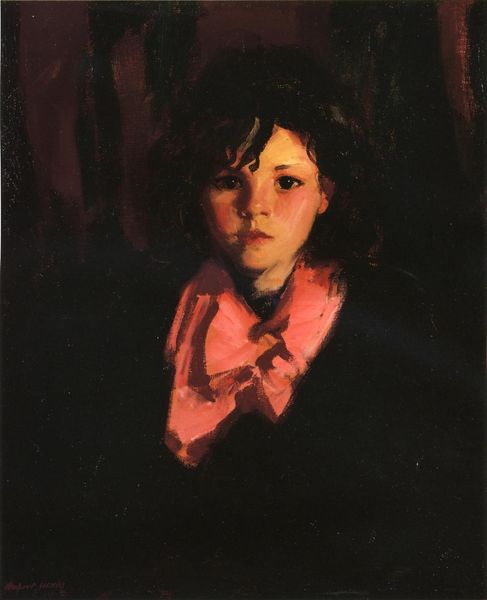
painting, oil-paint
#
portrait
#
portrait
#
painting
#
oil-paint
#
ashcan-school
#
modernism
#
realism
Copyright: Public Domain: Artvee
Editor: This is Robert Henri’s 1922 oil painting, Bernadita. She has a very direct, engaging gaze, and the dark background makes her the absolute focal point. What elements of its composition stand out to you? Curator: The masterful employment of chiaroscuro immediately captures my attention. Notice how Henri uses light and shadow to sculpt Bernadita’s face. The areas of illumination define her features and the shadows establish the underlying structure. Observe the chromatic relationships in her clothing and complexion: shades of rose against a pale skin. Editor: It’s almost theatrical, the way the light singles her out. I'm intrigued by the red shades that he utilizes. Is this simply representational, or could the colour be acting as a symbolic code here? Curator: Interesting proposition. Formally, the application of the red enhances her appearance. Observe the way that this element, which dominates our view in its position beneath her neck, interacts with the dark areas that dominate the image to contribute a dramatic quality. Would you consider it to dominate your perspective? Editor: I do agree, particularly at first. How did the Ashcan School’s aesthetic thinking contribute to this dramatic effect, if at all? Curator: Note how the portrait abandons conventional, posed representations in favour of an emphasis on capturing the essence and immediacy of the subject, in all elements and colours within. There is rawness; notice, especially, the bold, visible brushstrokes. They create a texture, a certain sense of unfiltered realism. This artwork, a product of an aesthetics focused upon realistic artistic and aesthetic representations, attempts to capture that aesthetic thinking. The structural choices communicate to us a dramatic, rather stark and striking work of realism. Editor: So, through formal choices, Henri presents the subject without romanticizing or idealizing her? Curator: Precisely. It showcases the essence and spirit rather than embellishment. This understanding impacts our knowledge on realism and portraiture. Editor: Definitely insightful. The close reading provides a greater grasp on the painting itself and the cultural elements influencing the construction of its elements.
Comments
No comments
Be the first to comment and join the conversation on the ultimate creative platform.

